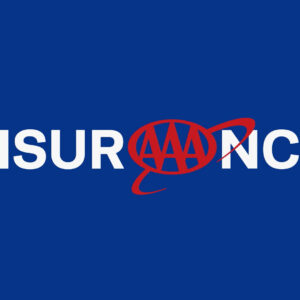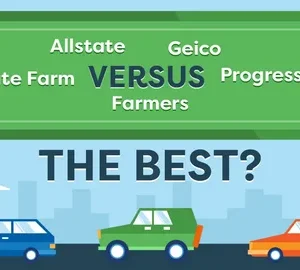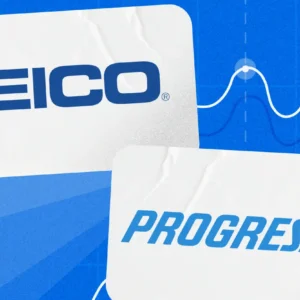Obamacare isn’t just a safety net—it’s an opportunity to lock in affordable, quality health coverage for your family. As the 2025 Open Enrollment season approaches, parents face a host of changes: expanded subsidies, shifting deadlines, evolving plan designs, and proposed legislative tweaks. In this comprehensive breakdown, we’ll walk through everything you need to know—from metal levels to premium caps, enrollment windows to Special Enrollment Periods—and show you how to make the best choice for your brood. Whether you’re comparing Bronze vs. Silver, juggling a newborn’s first doctor visit, or weighing a family of four’s anticipated out-of-pocket costs, this guide has you covered.
Obamacare 2025 Family Coverage Breakdown: What’s New?
The Affordable Care Act’s enhanced premium tax credits—first expanded under the American Rescue Plan Act (ARPA) and extended through the Inflation Reduction Act of 2022—remain in force for 2025. As a result:
- Premium Caps: No family will spend more than 8.5% of household income on benchmark plans (Silver level).
- Zero-Dollar Premium Plans: Four out of five enrollees will pay $10 or less per month, even with modest incomes (Investopedia).
- Maximum Out-of-Pocket (MOOP) Limits: Down slightly to $18,400 for families—2.6% lower than 2024—easing the burden if someone requires extensive care (Investopedia).
- Dependent Coverage to Age 26: Young adults can stay on a parent’s plan until turning 26, with full family pricing.
- Enhanced Subsidy Eligibility: Households up to 600% of the Federal Poverty Level (FPL) now qualify for sliding-scale assistance; prior to ARPA, subsidy eligibility cut off at 400% FPL (National Education Association).
At the same time, proposed budget reconciliation measures would:
- Shorten Open Enrollment to end December 15 instead of January 15.
- Restrict Certain Special Enrollment Periods, limiting year-round sign-ups for low-income households.
- Add a $5 Monthly Auto-enrollment Charge for those re-enrolled automatically in $0-premium plans unless they verify continued eligibility (KFF).
Taken together, these updates mean families can still access robust subsidies—but must be mindful of earlier deadlines and potential new fees.
Key Plan Categories and What Families Should Compare
Marketplace plans fall into four “metal levels” (Bronze, Silver, Gold, Platinum) plus Catastrophic for qualifying young adults. Each category shares a unique balance of premium vs. cost-sharing:
| Metal Level | Average Premium Change vs. 2024 | Typical MOOP for Family of Four | Ideal For… |
|---|---|---|---|
| Bronze | +5% (benchmark Bronze plan) | $18,400 | Low premiums, high deductible; emergencies only |
| Silver | +4% (benchmark Silver plan) | $18,400 | Best for subsidy-capped costs; balanced premium/out-of-pocket (Investopedia) |
| Gold | +3% estimated | $15,000 | Higher premiums, lower cost-sharing; frequent care |
| Platinum | +2% estimated | $8,000 | Maximum coverage; high premiums, minimal copays |
| Catastrophic | N/A (limited enrollment) | $8,000 | Under-30 or hardship hardship exemption; barebones |
Tip: Most families gravitate toward Silver plans because enhanced tax credits effectively cap costs at 8.5% of income, making Silver the sweet spot for predictable budgets and balanced coverage (phxhealthinsurance.com).
Premium Costs and Subsidy Details for 2025
Understanding how subsidies interact with plan costs is crucial:
- Benchmark Premium Increases: The national benchmark Silver plan rose 4% in 2025, while Bronze went up 5%—but subsidies offset the bulk of those hikes (Investopedia).
- Cap on Premiums: Regardless of income up to 600% FPL, no family pays more than 8.5% of their household income on benchmark coverage. For a family earning $60,000/year, that’s a maximum $5,100 in annual premiums—or $425/month—regardless of actual plan cost.
- Tax Credit Calculation: The advance premium tax credit equals the difference between the plan’s cost and the capped contribution. If a benchmark Silver plan costs $6,000/year and your household cap is $5,100, you pay $425/month and the credit covers $900/year.
- Zero-Premium Possibility: Families with incomes under 150% FPL often qualify for full subsidies, resulting in $0 monthly premiums for select Silver plans (National Education Association).
- Maximum Out-of-Pocket Limits: CMS set the 2025 family MOOP at $18,400—a slight reduction that protects against catastrophic expenses (Investopedia).
By clearly mapping your household income against these caps, you can forecast your true costs and avoid surprises.
Enrollment Windows and Deadlines Every Parent Must Know
Missing a deadline can leave your family uninsured for months. Mark these dates:
- Open Enrollment: November 1, 2024 – January 15, 2025
- Enroll by December 15 for coverage starting January 1, 2025
- Enroll between December 16–January 15 for coverage starting February 1, 2025 (Boundless, Centers for Medicare & Medicaid Services)
- Special Enrollment Periods (SEPs): January 16 – October 31, 2025, if you experience a qualifying life event (see next section) (Boundless).
- Coverage Effective Dates:
- January 1, 2025: Coverage for enrollments by December 15
- February 1, 2025: Coverage for enrollments after December 15 but by January 15
Warning: Proposed rules aim to shrink the Open Enrollment window to end December 15, 2025—so plan to act early (KFF).
Special Enrollment Periods and Qualifying Life Events
Even after January 15, you may qualify for an SEP if your family undergoes one of these events:
- Birth or Adoption: Includes placement for adoption or foster care.
- Marriage or Divorce: Losing or gaining coverage through a spouse.
- Loss of Other Coverage: Medicaid, CHIP, employer-sponsored, etc.
- Relocation: Moving to a new ZIP code or county.
- Income Changes: If your household income falls below or rises above eligibility limits for subsidies.
Each event typically gives you 60 days from the event date to enroll or change plans through HealthCare.gov or your state-based exchange (HealthCare.gov). For example, welcoming a newborn triggers an SEP allowing you to switch to a plan with broader pediatric coverage.
What Every Parent Must Know Before Enrollment
Before logging in to HealthCare.gov or your state marketplace, take these steps:
- Gather Income Documentation: Pay stubs, tax returns, unemployment awards—to estimate 2025 income accurately for subsidies.
- Check Provider Networks: Ensure your child’s pediatrician, specialists, and preferred hospitals are in-network.
- Review Formulary and Pharmacy Options: If your family uses specialty drugs (e.g., asthma inhalers, ADHD medications), verify coverage tiers and copays.
- Estimate Out-of-Pocket Costs: Use plan comparison tools to calculate total annual costs (premiums + expected deductibles + copays).
- Consider HSAs: High-Deductible Health Plans (HDHPs) paired with Health Savings Accounts can lower taxable income; check if your employer or state HSA plans allow family contributions.
- Account for Childcare or School-Based Clinics: Some plans include wellness visits or on-site clinics at schools.
- Double-Check SEPs: A life event may entitle you to enroll outside the window—don’t miss the 60-day deadline.
By front-loading this legwork, you’ll make decisions from a place of clarity, not panic.
Comparing Family Coverage Scenarios: Real-World Examples
Below is a sample cost comparison for two hypothetical families purchasing a Silver plan (benchmark) in 2025:
| Scenario | Income (% FPL) | Household Income | Cap (8.5%) | Plan Cost | Estimated Premium | MOOP |
|---|---|---|---|---|---|---|
| Family A: Modest Income | 250% FPL | $45,000 | $3,825 | $6,000 | $320/month | $18,400 |
| Family B: Middle Income | 450% FPL | $90,000 | $7,650 | $8,400 | $637/month | $18,400 |
- Family A pays $320 per month; subsidy covers $2,175/year.
- Family B pays $637 per month; subsidy covers $3,150/year.
In both cases, the 8.5% cap transforms potentially unaffordable premiums into predictable budgets—key for families managing childcare, housing, and education costs.
Actionable Enrollment Tips for Parents
- Start Early: Aim to complete selection by early December to lock in January 1 coverage.
- Shop All Metal Levels: Don’t assume Silver is your only viable option; Bronze plus an HSA may work for very healthy families.
- Use the “Compare Plans” Tool: Filter by total annual cost, not just monthly premium.
- Check State Resources: Some states (e.g., California, New York) offer additional subsidies or longer enrollment windows.
- Double-Check Auto-Enrollment: If you’re auto-reenrolled into a $0-premium plan, confirm you still qualify—or risk a $5/month fee come 2025.
- Consult a Navigator or Broker: Certified Marketplace experts can help you maximize subsidies and avoid pitfalls.
- Keep Records: Save all application confirmations, eligibility determinations, and payment receipts in case of discrepancies.
Conclusion
Obamacare’s 2025 family coverage landscape blends stability—through extended premium caps and subsidies—with evolving enrollment mechanics. By understanding plan categories, subsidy formulas, deadlines, and SEP triggers, every parent can choose a policy that safeguards their children’s well-being without breaking the bank. Remember to plan early, gather accurate income projections, compare total annual costs across metals, and leverage navigators if needed. With these strategies in hand, you’ll enter the 2025 Open Enrollment season empowered, informed, and ready to secure the best possible health coverage for your family.
Empower your family’s health journey—don’t wait. Visit HealthCare.gov or your state Marketplace today to compare 2025 plans before Open Enrollment closes.






